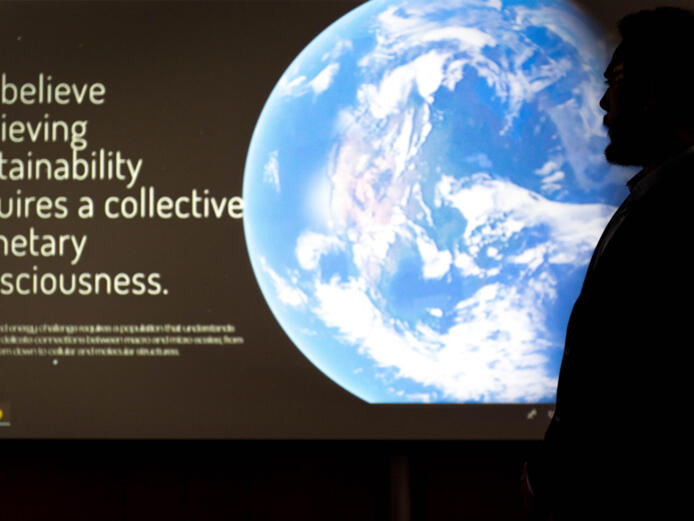The Environment

A saying that we reference often at the Blended Reality Laboratory is that when you change the way you see the world the world that you see changes. The climate has changed, it is still changing, and our ability to communicate the urgency and the intensity of this evolving situation has proven ineffective. Blended Reality supports projects that use emerging technology to communicate the state of our environment and the impact that human activity is having on it.
Blended Reality also previously helped host the Reality of Global Climate Change mixed reality hackathon in 2018 and 2019.
Example Projects:
Energy Academy
Inspired by how virtual reality could reshape our ability to convey complex information, such as the cycle of energy production and consumption on earth, Martin Wainstein worked with a group of students to build a virtual campus. Inside the campus were multiple domes, each one looking at a different aspect of how energy comes from the sun and moves through both the ecosystem and society. Leveraging virtual reality’s ability to play with scale and shape, participants can go from flying through the solar system to standing inside the cells of a living plant.
Collaborators:
- Martin Wainstein, zconsultant, Yale School of the Environment
- Bobby Berry Center for Collaborative Media and Arts (CCAM) and Tsai City Yale Innovation Fellow 2019-2020, Yale College ‘19
- Winter Willoughby Yale College ‘20
- Lance Chantiles Wertz, Yale College ‘19
Sponsored in part with additional funding from Avangrid and with the Yale Center for Business and the Environment
Links:
Read more about this project.
Thermal Photogrammetry
Using high resolution thermal cameras to document the thermal qualities of the built environment, researchers from Blended Reality and the Yale Center for Ecosystems in Architecture are hoping to built immersive photogrammetry models that participants can walk in and around to see the ways that heat and energy are distributed and consumed in the built environment. When we can see how energy moves through space, it might provide more language and a better set of tools to conserve that energy.
Collaborators:
- Mohammed Aly Etman, Lecturer, Yale School of Architecture
- Nick Novelli, Director of Research Engineering, Yale Center for Ecosystems and Architecture
- Justin Berry, Critic Yale School of Art and CCAM Core Faculty